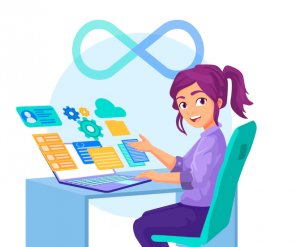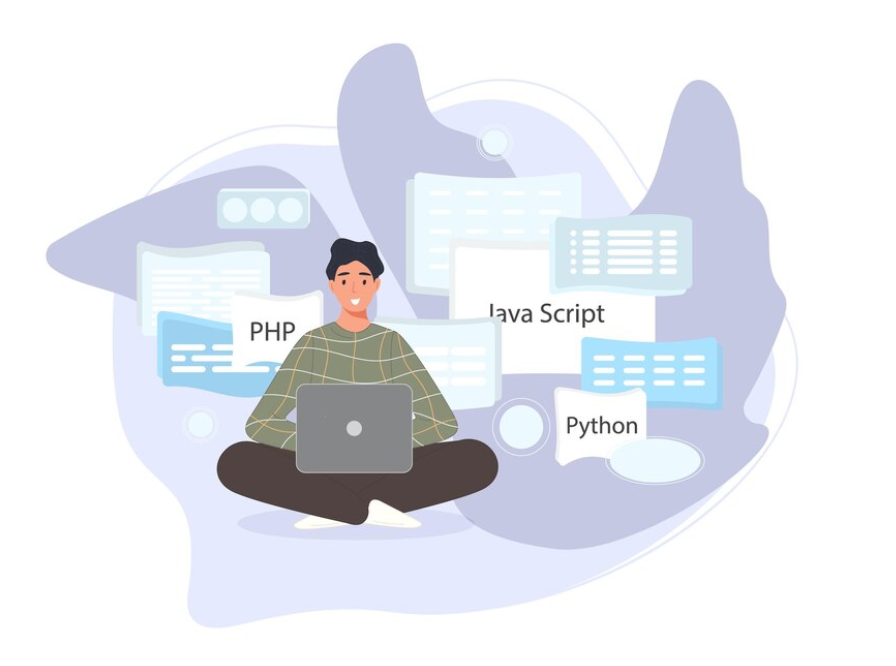How to Learn Coding with Python: A Comprehensive Guide
Introduction about How to Learn Coding with Python:-
However, Learning to code can open up a world of opportunities, and Python is one of the best languages to start with Learn Coding with Python. For instance, Whether you’re looking to switch careers, enhance your skill set, or simply explore a new hobby, Python offers a gateway to the world of programming that’s both powerful and accessible. In other words, this guide, we’ll walk you through everything you need to know to get started with Python training institute, from setting up your environment to building real-world projects. Let’s dive in!
Why Choose Python?
Popularity and Demand
For instance, Python has become one of the most popular programming languages in the world.

Similarly, Its simplicity and readability make it an excellent choice for beginners, while its powerful capabilities attract experienced developers and How to Learn Coding with Python. For instance, Industries ranging from web development to data science, machine learning, and artificial intelligence rely heavily on Python, ensuring that your skills will be in high demand.
Versatility and Simplicity (How to learn coding with python)
Similarly, Python is known for its versatility. It can be used for a variety of applications, including web development, data analysis, artificial intelligence, scientific computing, and more. Its simple syntax, which resembles plain English, makes it easier to learn compared to other programming languages.
Community Support
One of the greatest strengths of Python is its community. With an extensive ecosystem of libraries and frameworks, as well as active forums and user groups, you can easily find support and resources to help you along your learning journey.
Setting Up Your Python Environment
Downloading and Installing Python
However, The first step to learning Python is to set up your development environment. Visit the official Python website and download the latest version of Python. In addition The installation process is straightforward and should only take a few minutes.
Choosing an IDE or Code Editor
An Integrated Development Environment (IDE) or a code editor can make coding in Python much easier. Some popular choices include PyCharm, Visual Studio Code, Notebook. Choose one that fits your needs and get comfortable with its features.
Setting Up a Virtual Environment:-(How to Learn Coding with Python)
A virtual environment helps manage dependencies for your projects and keeps your global Python environment clean. You can set up a virtual environment using the module, which comes pre-installed with Python training institute.
Basic Concepts of Python and How to Learn Coding with Python
Syntax and Indentation
Python uses indentation to define the structure of the code, which makes it visually clean and easy to understand. Ensure consistent use of spaces or tabs throughout your code.
Variables and Data Types
Variables in Python do not need explicit declaration to reserve memory space. The declaration happens automatically when you assign a value to a variable. Python supports various data types, including integers, floats, strings.
Basic Operations
In other words, Python supports all the basic arithmetic operations such as addition, subtraction, multiplication, and division. Therefore, It also supports more complex operations such as exponentiation and modulus.
Control Structures
Conditional Statements
Similarly, Python uses if, and else statements to make decisions in your code. These structures allow you to execute certain pieces of code based on conditions.
Loops: for and while
However, Loops help you execute a block of code repeatedly. For instance The for loop is used for iterating over a sequence, Therefore, while the while loop continues to execute as long as a condition is true.
List Comprehensions
In addition, List comprehensions provide a concise way to create lists. Therefore, They are commonly used for making new lists by applying an expression to each item in an existing list.
Functions and Modules of How to learn coding with python:-
Defining and Calling Functions
In other words, Functions allow you to encapsulate reusable pieces of code. In other words, You define a function using the def keyword and call it by its name followed by parentheses.
Understanding Modules
In addition, Modules are Python files containing definitions and statements. They help organize your code into manageable sections. Therefore, You can import modules using the import statement.
Importing Libraries
Similarly, Python’s standard library is vast, and you can also use third-party libraries to extend Python’s functionality. For instance, Use the pip tool to install third-party packages.
Data Structures in Python
Lists
Similarly, Lists are ordered collections of items. However, You can create lists using square brackets and access items using indices.
Tuples
For instance, Tuples are similar to lists but are immutable, meaning their values cannot be changed after creation.
Dictionaries
Therefore, Dictionaries are collections of key-value pairs. However, They are unordered and mutable, making them perfect for storing data that should be quickly retrievable via keys.
Sets
In other words, Sets are unordered collections of unique items. In Conclusion, They are useful for membership testing and eliminating duplicate entries.
Object-Oriented Programming (OOP) with Python
Classes and Objects
For instance, OOP is a programming paradigm that uses classes and objects. In other words, Classes define the blueprint for objects, and objects are instances of classes.
Inheritance and Polymorphism
Similarly, Inheritance allows a class to inherit attributes and methods from another class. However, Polymorphism allows methods to be used in different ways depending on the object type.
Encapsulation and Abstraction
In addition , Encapsulation hides the internal state of objects and only exposes necessary parts. However, Abstraction simplifies complex systems by modeling classes appropriate to the problem.
Working with Files
Reading from Files
In other words, Python makes it easy to read from files, whether it’s a simple text file or more complex data formats like CSV or JSON. Therefore, This skill is essential for data analysis and manipulation tasks.
Writing to Files
For instance, Writing data to files allows you to store results and information for later use. Similarly, Python’s straightforward methods make it easy to handle file-writing operations.
Handling Exceptions
In addition, Exception handling is a critical skill in Python, enabling you to manage errors gracefully and maintain the flow of your program.
Libraries and Frameworks
Popular Python Libraries
Python boasts a vast array of libraries that can help you with tasks ranging from data analysis to web development. Libraries like NumPy, pandas, and matplotlib are essential for data science, while others like requests simplify HTTP requests.
Overview of Frameworks like Django and Flask
Similarly, For web development, Python offers powerful frameworks like Django and Flask. However, Django is great for building robust, scalable applications, while Flask is more lightweight and flexible, ideal for smaller projects.
Debugging and Testing
Debugging Techniques
Learning how to debug your code effectively is crucial. Python provides various tools and methods to help you identify and fix bugs quickly.
Writing Unit Tests
Unit tests are an essential part of developing reliable software. They help you ensure that your code works as expected and make future changes easier and safer.
Using Testing Frameworks
Python has several testing frameworks, such as unit test, that can streamline the process of writing and running tests.
Developing Real-World Projects
Project Ideas for Beginners
Similarly, Starting with small projects can help you apply what you’ve learned and gain practical experience. Consider projects like a to-do list app, a simple web scraper, or a basic game.
Steps to Build a Project and Learn Coding with Python
Therefore, Building a project involves several steps: planning, coding, testing, and deployment. Learning to navigate this process will prepare you for more complex tasks.
Best Practices
Following best practices such as writing clean code, using version control, and documenting your work will make you a more effective and efficient programmer.
Resources for Learning Python
Online Courses
Many online platforms offer Python courses, ranging from beginner to advanced levels. Websites like Coursera, edX, and Udemy provide comprehensive courses taught by experienced instructors.
Books and Tutorials
Books and tutorials can also be invaluable resources. Titles like “Automate the Boring Stuff with Python” and “Python Crash Course” are excellent for beginners.
Community Forums
Joining community forums such as Stack Overflow, Reddit, and Python-specific groups can provide support and encouragement from fellow learners and experienced developers.
Tips for Success
Consistent Practice
Consistent practice is key to mastering Python. Set aside regular time to code and challenge yourself with new problems and projects.
Joining Coding Communities
Joining coding communities can help you stay motivated and inspired. You can learn from others, share your progress, and even collaborate on projects.
Participating in Coding Challenges
Participating in coding challenges and competitions can push you to improve your skills and think creatively. Platforms like Code and Hacker Rank offer many challenges to test your abilities.
Conclusion for How to learn coding with python
In addition, Learning Python is a rewarding journey that can open doors to numerous career opportunities and personal projects. Similarly, Learn Coding with Python With its simplicity, versatility, and strong community support, Python is an excellent choice for anyone looking to learn coding. For instance, How to Learn Coding with Python By following the steps outlined in this guide and utilizing the resources available, you’ll be well on your way to becoming proficient in Python.
For those looking for a structured learning path and expert guidance, consider enrolling in a Python training institute. Our institute offers comprehensive courses designed to take you from a beginner to an advanced Python programmer, with hands-on projects, expert instructors, and a supportive learning environment.
FAQs
- How long does it take to learn Python?
The time it takes to learn Python varies depending on your background and how much time you can dedicate to learning. On average, it can take a few months to become comfortable with the basics and several more to become proficient.
- Do I need any prior programming experience to learn Python?
No, Python is an excellent language for beginners with no prior programming experience. Its simple syntax and readability make it an ideal starting point.
2. Can I learn Python on my own, or do I need to take a course?
While you can learn Python on your own using free resources, taking a structured course can provide a more organized learning path and access to expert guidance.
3. What kind of projects can I build with Python?
You can build a wide variety of projects with Python, including web applications, data analysis tools, machine learning models, games, automation scripts, and more. Start with small projects to build your skills and gradually take on more complex tasks.



